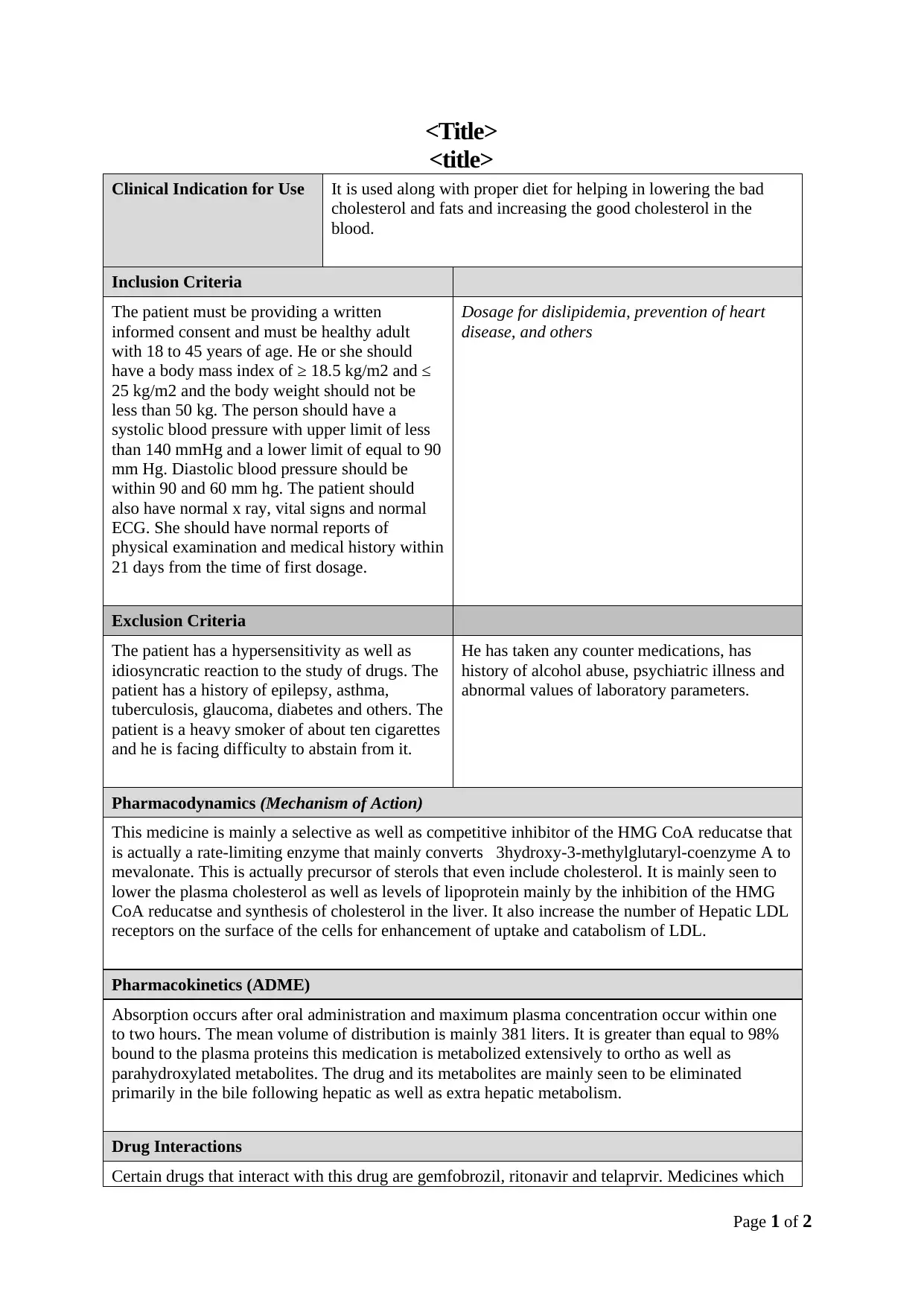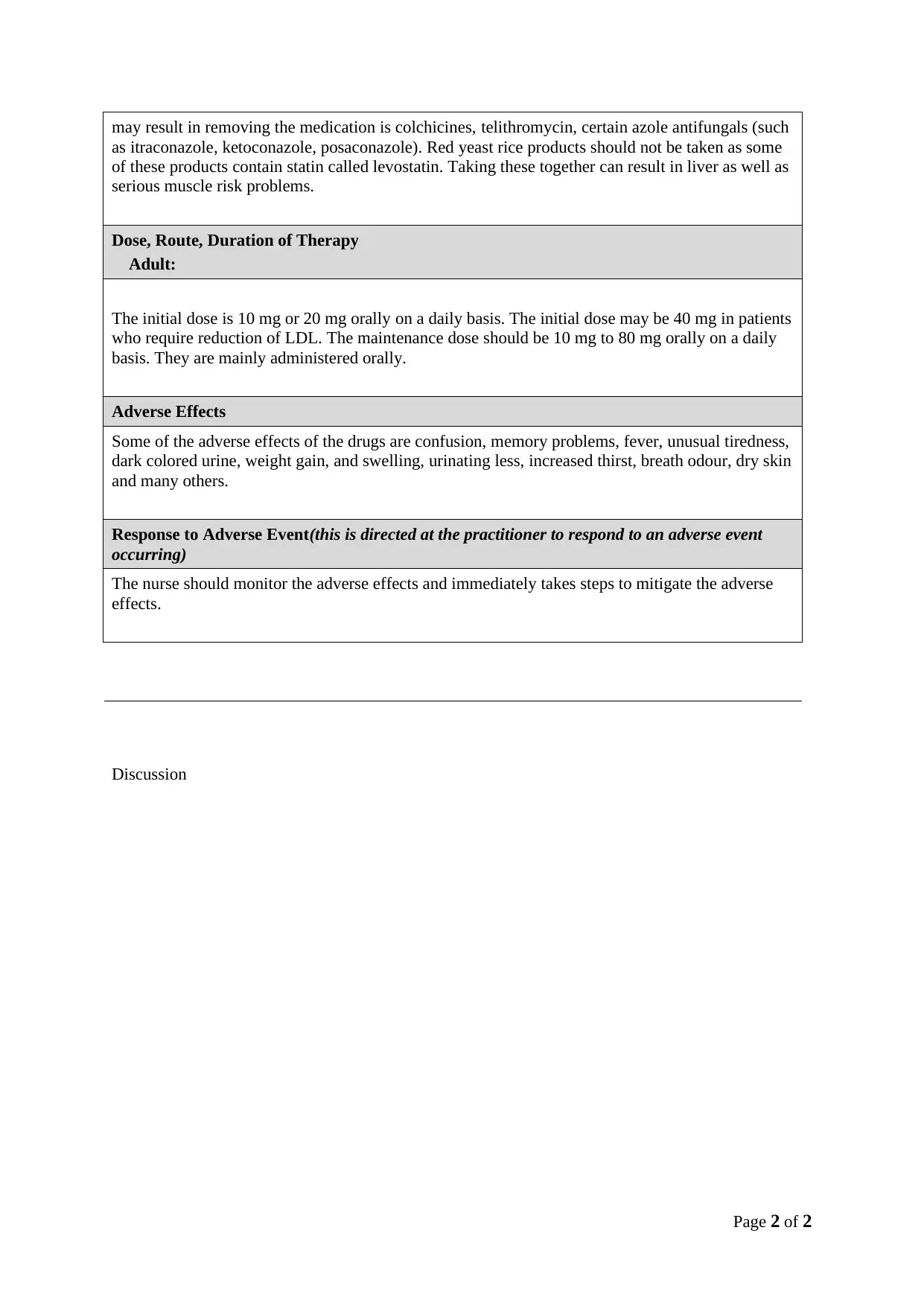NURS12154 Pharmacology: Drug Protocol for Clinical Use & Discussion
VerifiedAdded on 2023/06/11
|2
|662
|498
Practical Assignment
AI Summary
This assignment presents a detailed drug protocol, encompassing clinical indications for use, inclusion and exclusion criteria, pharmacodynamics (mechanism of action), pharmacokinetics (ADME - absorption, distribution, metabolism, excretion), drug interactions, dosage, route, duration of therapy, and potential adverse effects. It is designed to guide healthcare personnel in a hospital ward environment to ensure safety and quality requirements for administering the chosen medication are met. The protocol outlines specific considerations for adult patients, including initial and maintenance dosages, and emphasizes the importance of monitoring and mitigating adverse effects. The document also highlights potential drug interactions and contraindications to ensure patient safety.
1 out of 2








![[object Object]](/_next/static/media/star-bottom.7253800d.svg)